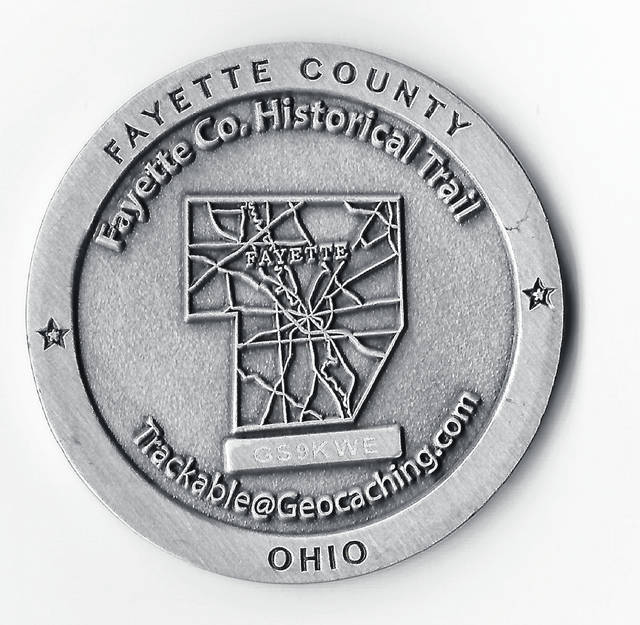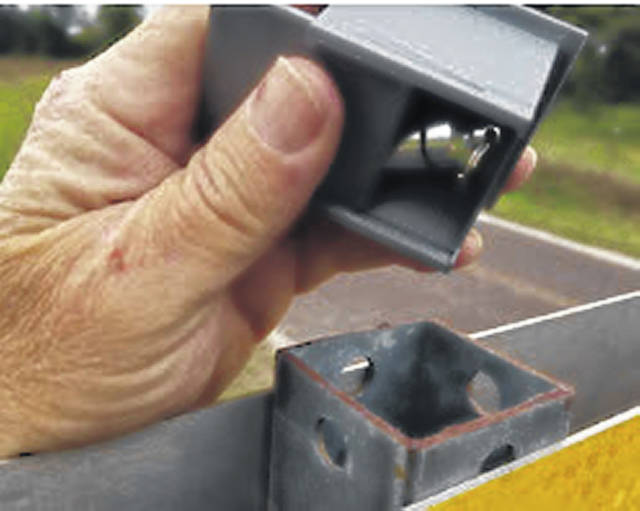

As the weather changes and more comfortable days can be expected, the Fayette County Historical Society wants to remind the public of the Fayette County History Trail — a geocaching treasure hunt.
The Fayette County Historical Society recognizes the current medical concerns and orders from the state and federal governments as to social distancing, and are supportive. The society’s first concern is for the safety of all those involved. Please use caution as anyone would in their everyday activities.
Geocaching was originally similar to the 160 year old game letterboxing, which uses clues and references to landmarks embedded in stories. Geocaching was conceived shortly after the removal of Selective Availability from the Global Positioning System (GPS) on May 2, 2000.
On May 3, 2000, the first document placement of a GPS-located cache took place in Beavercreek, Oregon by Dave Ulmer. Within three days the cache had been found twice. The activity was originally referred to as the GPS stash hunt or gpsstashing. The term Geocaching became the common language after the word “stash” was considered to possibly have a negative meaning.
For the traditional geocache, a geocacher will place a waterproof container with a log book then record the GPS coordinates along with other details of the location on a listing site. Other geocachers obtain the coordinates from that listing site and seek out the cache using hand held GPS receivers or cellular phones equipped with an application. Those who find the geocache record their exploits in the logbook and online, but then must return the cache to the same coordinates so that other geocachers may find it. Additionally, a geocache that has been vandalized or stolen is said to have been “muggled,” a term that derives from the Harry Potter series. Geocaches vary in size from “nano” containers the size of a fingertip to larger cylinders, boxes, or even deceptive objects, which add to the enjoyment of those searching for the cache.
The Fayette County History Trail was devised in 2016 by Joy Stanforth and her daughter, Kristy Bowers, as a project related to the Leadership Fayette training program they were attending. A grant was obtained from Fayette County Travel & Tourism and the Convention Bureau to help fund the project.
The Fayette County Historical Society was contacted for possible historic locations and to assume the operation of the History Trail program once the Fayette Leadership training was completed. This grant allowed the purchase of caches and supplies, along with a commemorative coin symbolizing the Fayette County History Trail, which one may qualify for after locating all 13 caches. The birth of the Fayette County History Trail then arrived with a kickoff event on Saturday, June 18 in 2016.
Many additional caches are hidden in Fayette County for anyone’s enjoyment, however they are not part of the FCHS History Trail.
A passport which provides general location of 13 caches to be located is available at the Fayette County Museum in person, or from a mailbox at the museum’s rear door, for non-business hours, or on their Facebook page. When a cache is found, the log is signed and the “code word” located in the cache is then recorded on the passport. When all 13 have been located and recorded, it is then submitted to the Fayette County Historical Society — and after verification — the commemorative coin is mailed to the participant. The Fayette County History Trail has had participants from across the country with states as far away as South Dakota.
The original trail included 12 caches located around Fayette County, with a 13th added later. This cache had already existed with an historic origin, so it became the 13th cache. Each cache has a historic connection.
The Fayette County History Trail even has a Presidential connection. One of the 13 caches is located in a small cemetery in the southeastern portion of Fayette County. The historic significance is that Phebe Kearney is interred in this small cemetery. Phebe Kearney is the great-great-great-great grandmother of President Barack Obama. As in all cemetery locations, the cache is located near the historic persons internment. With respect to all, no cache is mounted to or attached to any grave or grave marker.



